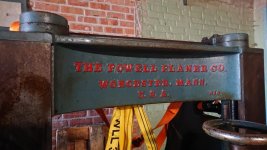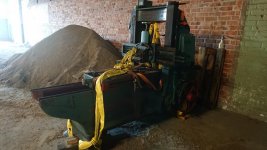Lumberjack
Hot Rolled
- Joined
- Jun 3, 2006
- Location
- Sweden
So i closed the deal on on this baby and got it home.
It is not in operational condition as is but the care taken to protect the ways give some hope. But a minimum of disassembly and cleaning is needed and then an evaluation.
The DC Drive also need some tlc.
I would appreciate any and all info about it.
Got one handle with dial on it but think something is missing..



It is not in operational condition as is but the care taken to protect the ways give some hope. But a minimum of disassembly and cleaning is needed and then an evaluation.
The DC Drive also need some tlc.
I would appreciate any and all info about it.
Got one handle with dial on it but think something is missing..




